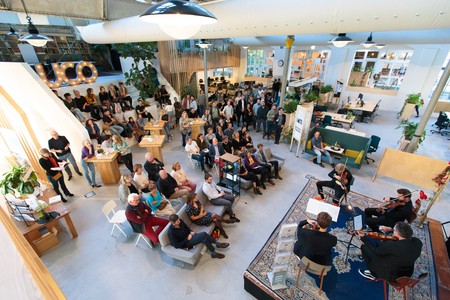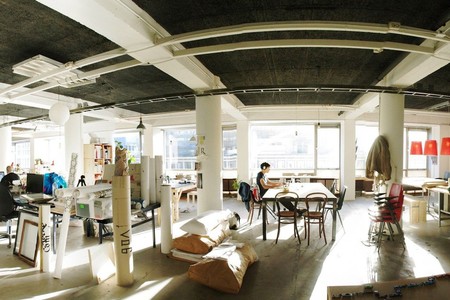The following article consolidates a three-part series that Except produced for Sustainable Vietnam. It shares Except's experience and insight on developing innovation communities, why they are so crucial for sustainability, and how Vietnam benefits from ViCo, Vietnam's first innovation community for sustainability. Additionally, it provides information on some critical aspects of the renovation of UCo, our innovation community in Utrecht, and how it's design enhances the sustainability of the neighborhood and the operations within.
Sustainable Vietnam is a website promoting topics, people, and sustainability issues and highlighting progress and impact. Contributors and topics are from diverse industries, sectors, and the community, all working together and making an impact in their own unique way.
Week 1
Innovation communities for sustainability and systemic change
By Tom Bosschaert, founder and director of Except
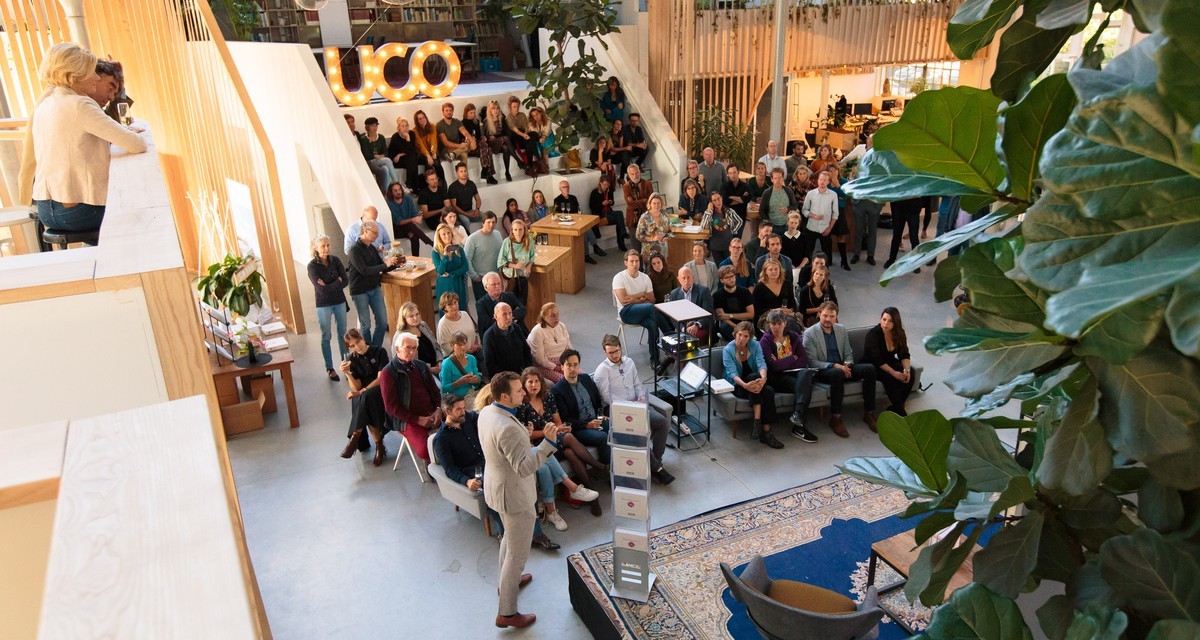
Diversity, transparency, collaboration, and a shared vision. Critical features in achieving sustainability and vital for effective innovation. Along with the team at Except Integrated Sustainability, I have initiated and managed two innovation communities in the Netherlands and recently established ViCo in Vietnam.
These collectives, housed in cooperative open-plan and flexible workspaces, bring together companies and individuals from various backgrounds and industries. Their main goal - to strive for these factors and enhance systemic sustainability. I will share with you some of the features that make a resilient and effective innovation community.
Multidisciplinary perspectives enhance creativity
By creating cooperative environments, innovation communities are ideal for analyzing systems and for bolstering sustainable solutions. Not only do they enhance member’s operations, but can bolster sustainability across entire regions.
The most impactful factor in this is diversity - of profession, experience, and background. It's impossible to understand the complexity of the systems around us from a sole viewpoint, let alone implement solutions and attempt to solve them.
Innovation communities for sustainability encourage membership from diverse fields. Whether manufacturing, engineering, architecture, law, or hospitality, all industries and organizations offer unique perspectives and abilities.
Similarly, when it comes to size, freelancers to SMEs, NGOs, and larger entities are all encouraged to take part. Such a community ensures that members can retain the flexibility of smaller companies and access the knowledge and network of larger conglomerates. This approach also facilitates a vital space for the public and private sectors to actively collaborate and benefit.
Multidisciplinary perspectives enhance creativity
By creating cooperative environments, innovation communities are ideal for analyzing systems and for bolstering sustainable solutions. Not only do they enhance member’s operations, but can bolster sustainability across entire regions.
The most impactful factor in this is diversity - of profession, experience, and background. It's impossible to understand the complexity of the systems around us from a sole viewpoint, let alone implement solutions and attempt to solve them.
Innovation communities for sustainability encourage membership from diverse fields. Whether manufacturing, engineering, architecture, law, or hospitality, all industries and organizations offer unique perspectives and abilities.
Similarly, when it comes to size, freelancers to SMEs, NGOs, and larger entities are all encouraged to take part. Such a community ensures that members can retain the flexibility of smaller companies and access the knowledge and network of larger conglomerates. This approach also facilitates a vital space for the public and private sectors to actively collaborate and benefit.
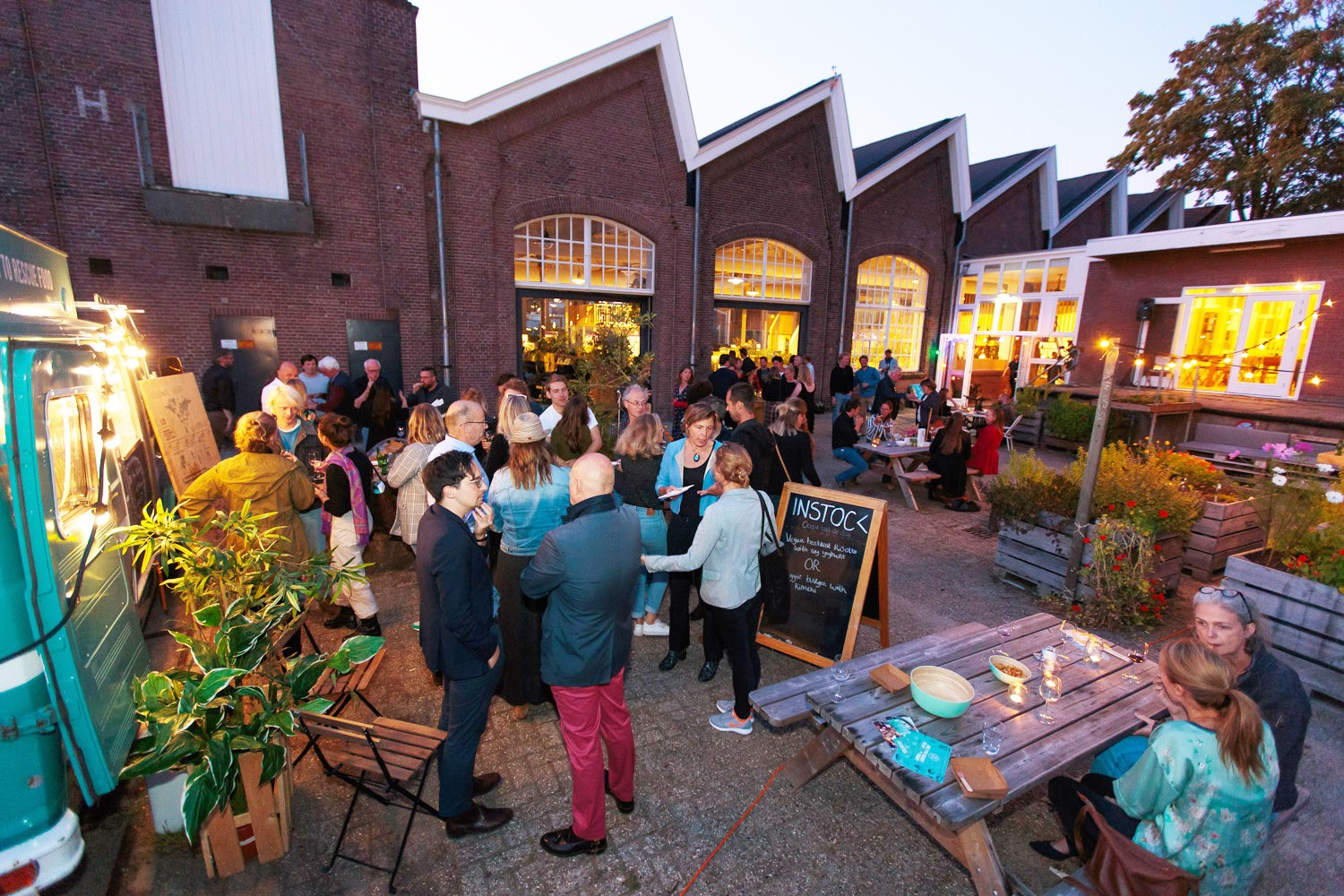
Global and local networks enhance innovation
Local networks are essential to addressing sustainability. It is they who best understand specific geographic and cultural characteristics. However, international partnerships bring insight into how similar problems have been solved elsewhere.
This support helps achieve a deeper understanding of an issue and the ability to adapt and develop ideas quickly. This ensures a smoother and successful process, making it easier to appeal to investors.
A successful innovation community is in constant dialogue with it’s broader community. Facilitating events, performances, and workshops inspire and aid interactions with external stakeholders help achieve this.
This interaction enhances the learning experience and knowledge exchange across an even more diverse network. It bolsters sustainability beyond the innovation community and ensures ideas reach even more projects to aid systemic social change. And, of course, it helps promote those members within the community.
The nature of a space matters
The structure that houses an innovation community works best when it demonstrates the values of the community. The furniture design, natural daylight and cooling, circular materials, greenery, and attention to quality all contribute to a more sustainable community.
Removing walls to create a more open space creates transparency, with delicate attention to privacy, noise reduction, and areas for interacting. A uniform but playful design that walks the line between professionalism and inspiration.
A dedicated working space is necessary, but innovation communities also accommodate remote workers. Many professionals actively seek a collaborative network and appreciate access to shared facilities, such as meeting rooms and training spaces.
Collaboration for sustainability in Vietnam
Vietnam faces unique challenges, but with strong work culture and an eagerness to innovate and learn with others, the future looks bright. We aim to use ViCo to help connect local and global socially-minded companies with a place to develop their own and Vietnam’s strengths to become a sustainability leader.
Week 2
Vietnam’s shift toward more global connectivity and resilience
By Chi Nguyen, regional director Asia
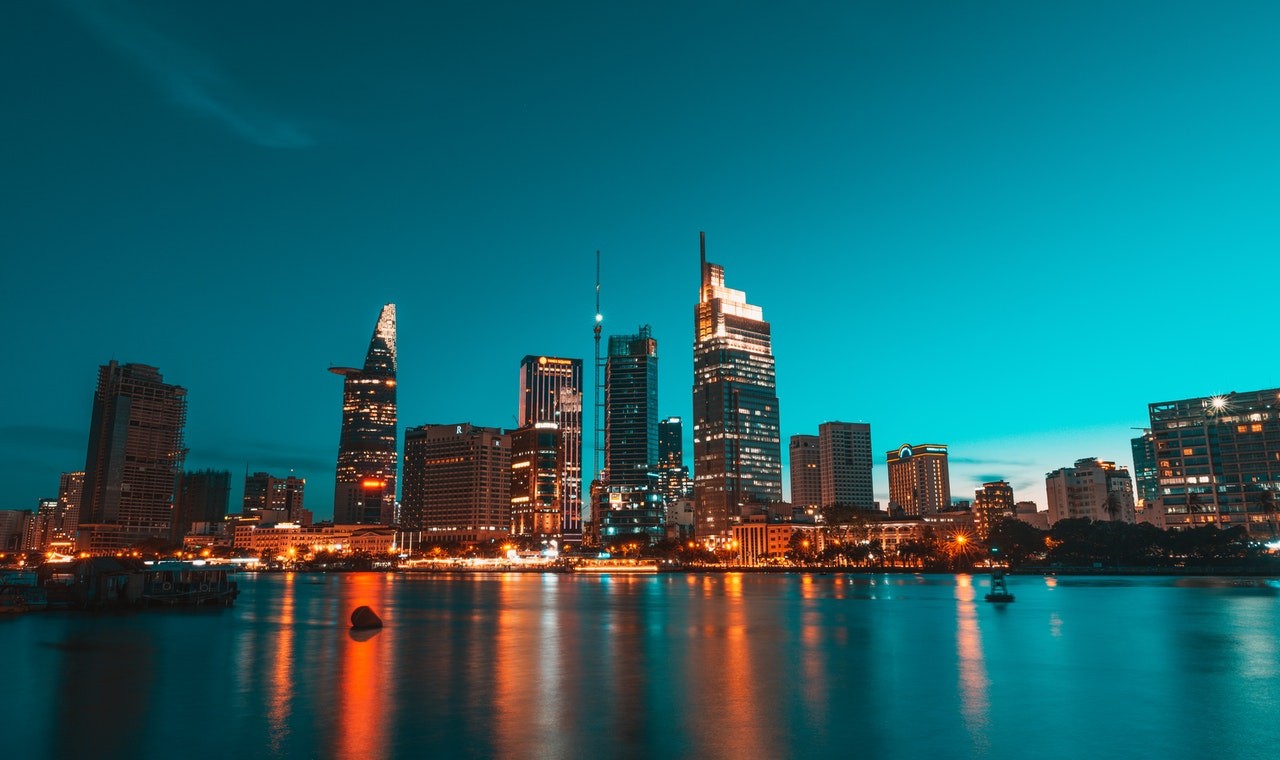
The last few decades have taken a toll on Vietnam's environment, exacerbated by our vulnerability to natural disasters, climate change, and a post-pandemic recovery. However, we are entering a new phase of development. The future is shaping up to be more innovative, global, and cooperative, and it's exciting to be a part of it with ViCo, our innovation community in HCMC.
Vietnam's sustainable goals
Vietnam's overarching framework for this coming decade is The National Green Growth Strategy for 2021-2030. The plan outlines goals and actions to help reduce GHG emissions by at least 15%, "greenify" the entire economy and raise the quality of living for all.
Policymakers have incorporated targets related to the United Nation's SDGs into development plans. The UN has recently stated that Vietnam, now a middle-income country, is progressing well compared to other Asian nations and is likely to achieve five out of the 17 SDG goals: no poverty, zero hunger, quality education, climate actions, and global partnerships.
However, there are a few key areas that still need more focus:
- making the best use of natural and financial resources
- improving governance through digitalization
- engaging social organizations and the private sector
- encouraging investment and collaboration with the international community

Sustainability as a global trend
Vietnam is reliant on FDI, and after a few slow years, investments are rising again in Vietnam. The first quarter of 2022 alone is up 7.8% from the previous year, with FDI currently accounting for over 70 percent of export turnover. This need for healthy partnerships makes the UN's last two recommendations particularly poignant.
Europe and North America have already begun their green growth phase. As companies and governments look to invest in Asia, they will seek those who can match their demands for sustainability.
The Vietnamese government has announced its willingness to attract and partner closely with new partners, particularly those from nations that have experienced and overcome similar challenges, such as Singapore, the Netherlands, Japan, and the US.
An innovative community in HCMC
Except have initiated ViCo, Vietnam's first innovation community for sustainability, to facilitate the community that will help this transition. It offers a working space for the public and private sectors and local and global organizations to work together and share insight and knowledge.
Ho Chi Minh City was chosen for several reasons. First of all, as the country's economic capital, it's where businesses - both foreign and domestic - are attracted. Secondly is the proximity to the food baskets of the Mekong Delta and Central Highlands and the manufacturing and technology hubs surrounding HCMC, including Binh Duong and Dong Nai provinces. Last but not least is the vibrant entrepreneurialism that is keen to learn and do what they can to preserve the environment and society.
There is a growing demand for these types of communities and their benefits. Once established in HCMC, there are plans to roll out other sister centers in Hanoi, Danang, and other locations across Asia for even greater global connectivity.
There is no single solution for sustainability. However, creating communities to share insight on experience and knowledge is the most impactful way we can enhance cooperation and investments, local innovations, and Vietnam's systemic sustainability.
Week 3
Redesigning Buildings for Sustainability
By Tom Bosschaert
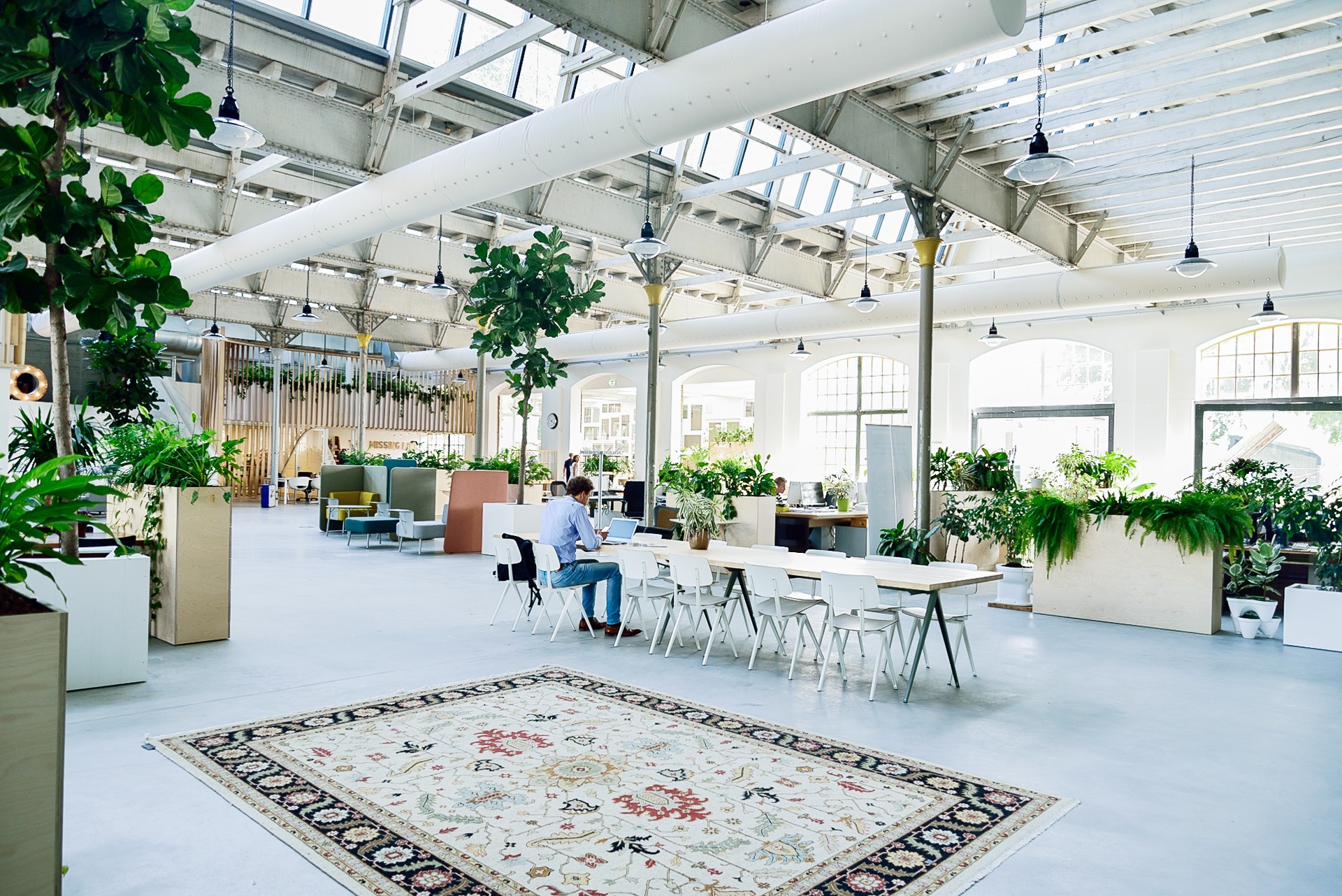
Innovation communities bring together individuals and organizations to build upon and share experience, knowledge, and new ideas. The building that houses such a community must convey this philosophy and evolve with its users.
Energy use is critical, but sustainable buildings are so much more. They must also incorporate circularity and passive and adaptive design to ensure beauty and functionality that stand the test of time. These concepts were central to the design of UCo, Except's innovation community in Utrecht, the Netherlands - the inspiration and model for ViCo, Vietnam's first innovation community for sustainability.
Renovation of older buildings
It's relatively easy to achieve "green" buildings starting from scratch. However, renovating and converting current buildings for sustainability is much more challenging, though arguably more critical.
For over a century, UCo functioned as a locomotive workshop and hub for European train crews - the renovation ensured the main hall was restored to its original, spacious nature. Large glass doors where the railway track used to enter remind users of the building's past. When paired with the north-facing roof windows, UCO's shared office spaces are bathed in daylight, reducing lighting energy use by over 80%.
Energy neutrality and circular materials
Because UCo is a heritage-listed building, there were limits to modification - this particularly affected insulation. Aside from us wanting to retain them for their beauty and historical value, the external walls and windows needed to be preserved. Our solution was to insulate the inside of the outer walls, ensuring moisture could escape via a unique breathing system. A central heat pump running through a concrete-core-activated floor system ensures UCo stays warm and carbon-neutral.
In the summer months, UCo utilizes an ‘adiabatic’ cooling system - the first of its kind in Western Europe. The innovative design cools through the evaporation of water and saves enormous amounts of energy.
We reused nearly all the building's original materials, transforming them into things like stairways and a central podium. Local tradespeople and artisans made or refurbished most of the furniture and interior. We used old hospital windows from a nearby demolition for plant-covered ‘climate walls’, and luckily rescued several spectacular Persian carpets from going to landfill. When we needed new materials, we utilized locally grown renewable timber to reduce carbon footprints and ensure circularity.
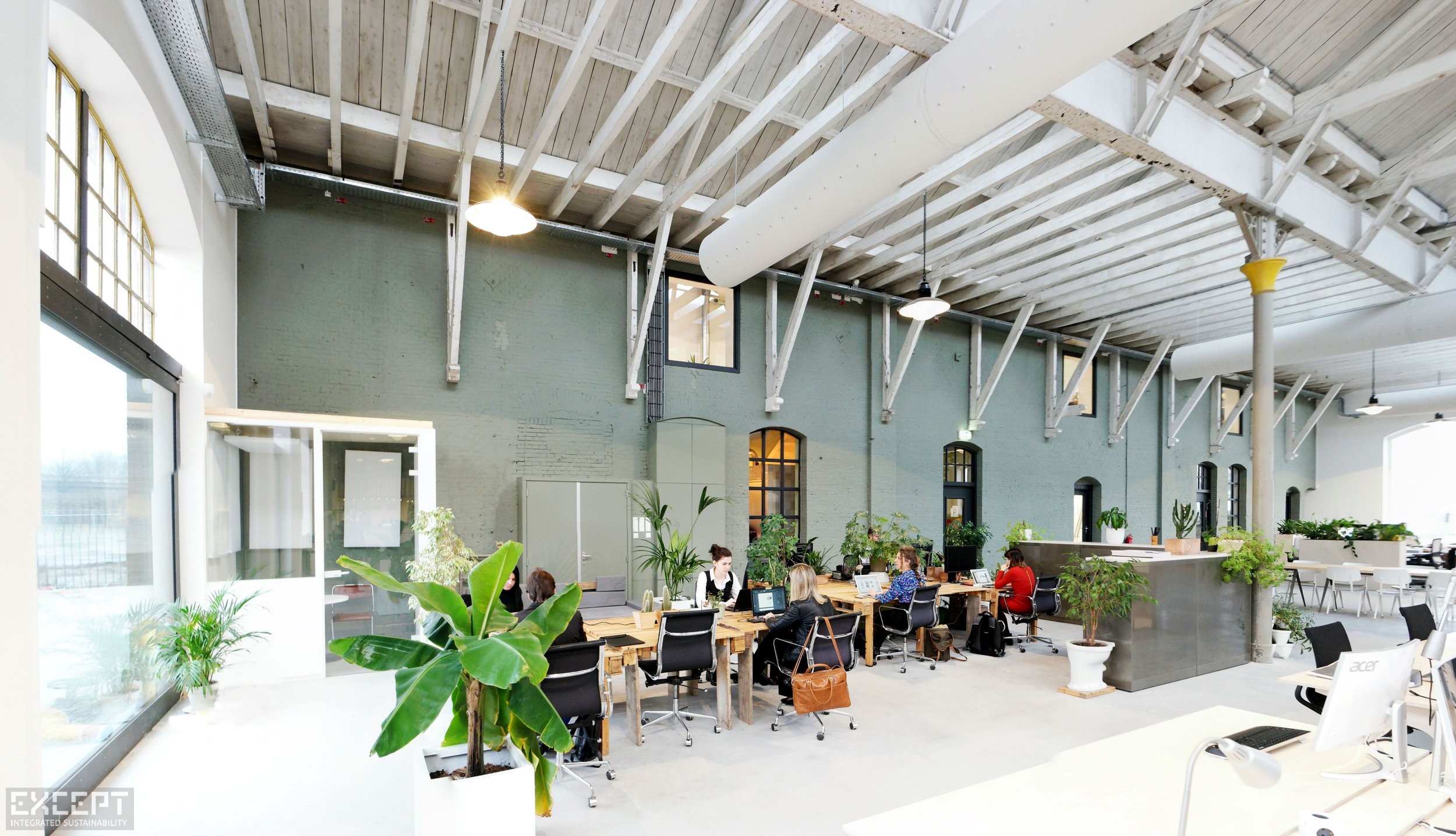
Designing the nature of a space
Frank Lloyd Wright's Johnson Wax Headquarters in the US, completed in 1939, greatly inspired UCO's design. Since completion it has been widely regarded and adored by many, however, it was initially plagued by concerns that its open and shared space would be noisy, lack privacy, and not conducive to work.
Similarly, UCO's large central hall faced similar issues. We overcame this by using custom planter boxes and cabinets. These block views and create privacy when sitting, but allow easy communication when standing, creating a balance between connectivity and seclusion. The office stays quiet - yet there's always a energizing buzz in the office. If you need a more private space there are meeting rooms, booths, or my preferred place, the outside garden.
UCO has an adaptive design, meaning it can be altered over time to suit changing needs. Office spaces can be made smaller, extended, or rearranged for another function entirely. Likewise, the use of each area can change too. For example, as online meetings have become more common, we are currently redesigning a hallway into additional private call spaces.
Scattered throughout UCo are hundreds of plants and a few large mature trees. These help purify the air, create a garden-like space throughout the seasons, and positively impact users' well-being and productivity. It's such a pleasant space that people rarely avoid coming into the office - many even come in on weekends to spend extra time here.
Sustainable Renovations will be key
UCO's restoration took a formerly dilapidated warehouse and into one of Europe's most sustainable buildings. Going beyond the demands of standard certifications proves sustainably modifying older structures is feasible and at no extra cost than typical renovations. ViCo, being in Ho Chi Minh City, will require a slightly different approach, but building on lessons learned with UCo, promises to be even more transformative.
20 juni 2022



